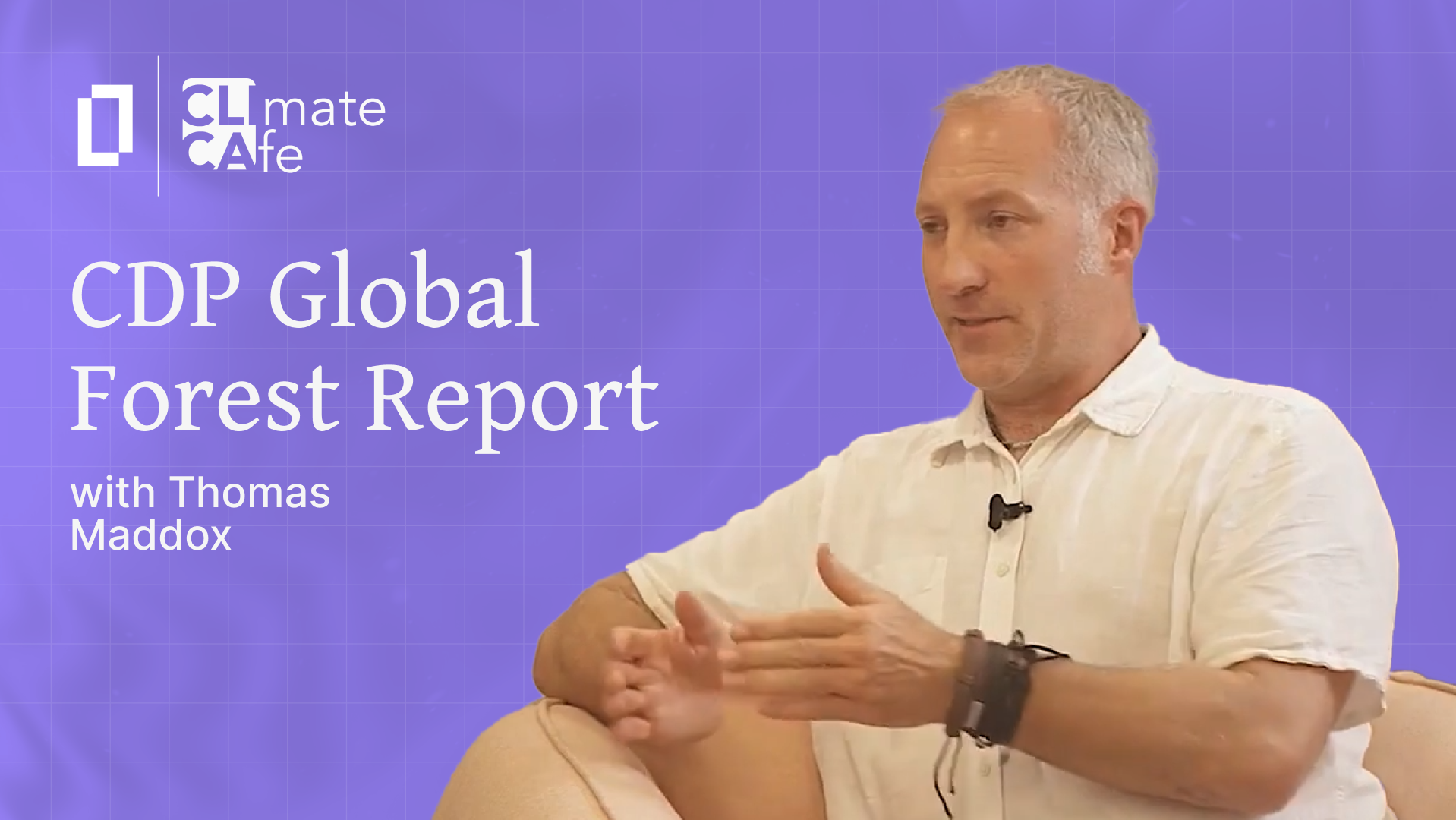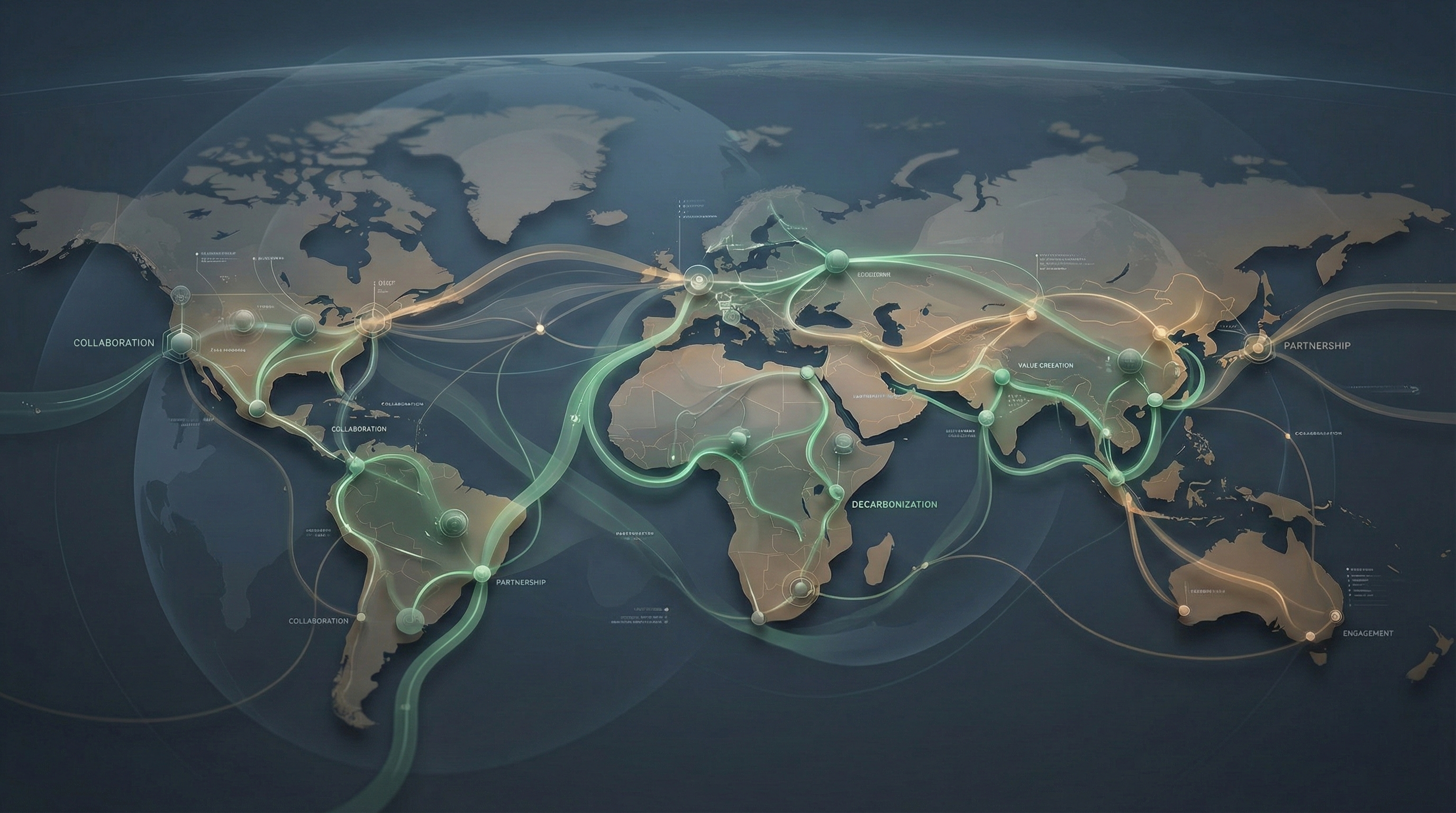Summary
- Companies increasingly recognise deforestation risks, but most still fall short on implementation and supply chain engagement.
- Targeted scrutiny and collaboration have improved palm oil’s performance, but transparency challenges persist in beef and soy supply chains.
- Land is central to climate solutions, as forests and land use represent up to a quarter of global emissions. Addressing deforestation is essential for meeting climate goals.
- Landscape approaches offer scalable hope, reinforcing how coordinated, jurisdictional action and innovative financing models can accelerate deforestation-free supply chains.
At a time when environmental disclosure is reaching new heights, Thomas Maddox of CDP offers a sobering truth: while companies are increasingly aware of deforestation-related risks, few are acting at the pace or scale required.
With over 20 years of experience in environmental organisations and known for pioneering the “Heart of Borneo” initiative, Thomas Maddox is Global Director of Forests & Land at CDP. He brings expertise spanning biodiversity, conservation, and corporate sustainability, and currently leads CDP’s Global Forests program.
In a wide-ranging conversation with Lia Nicholson of Terrascope, Maddox unpacks four key insights from CDP’s latest Global Forests Report, and where transformative progress must come from next.
1. Recognition Without Action is the Sector’s Core Dilemma
Over 1,000 companies now disclose forest-related data to CDP, a strong indicator that deforestation is firmly on the corporate radar.
And yet, as Maddox puts it, “The story that repeats every year is that they’re not acting on it.”
CDP data shows that companies estimate an average of $300 million in potential risk exposure due to deforestation, while the cost of mitigation sits at just $17 million per company.
Despite this stark return on investment, the implementation gap persists. Companies may report policies and intentions, but fail to engage meaningfully down their supply chains or alter procurement strategies. This disconnect between recognition and response remains the greatest barrier to progress.
2. Palm Oil Has Moved Forward; Soy and Cattle Remain Stuck
Palm oil, once a poster child for deforestation, has seen meaningful progress. Through initiatives like the Roundtable on Sustainable Palm Oil (RSPO), NGOs and corporates have learned to collaborate—turning confrontation into co-creation. Today, palm oil is among the better-performing sectors in CDP’s forest disclosures.
However, soy and beef are lagging. Particularly in Brazil, soy cultivation and cattle farming remain major deforestation drivers, and their supply chains are opaque, fragmented, and hard to trace. Frequent cattle transfers during production make it especially difficult to verify sourcing integrity. Without technological solutions and sector-specific pressure, these commodities risk becoming deforestation’s last strongholds.
3. Land Use is a Climate Imperative
Land use change accounts for up to 25% of global emissions—more than the EU’s entire emissions output. Forests alone represent 12% of global emissions, and that doesn’t account for their carbon sequestration value or co-benefits in water, biodiversity, and soil health.
Maddox is clear: “You cannot meet climate goals without addressing forests and land.”
Forests aren’t just carbon sinks—they’re economic and ecological safety nets. Yet, the climate agenda often reduces forests to carbon math. Maddox stresses the need to go beyond “carbon sponge” thinking and treat forests as foundational ecosystems, essential for resilience, not just mitigation.
4. Jurisdictional and Landscape Approaches Could Be Game Changers
One of the most promising trends is the rise of landscape or jurisdictional approaches, where companies coordinate with peers, governments, and local communities across an entire region. This collective model addresses the root causes of deforestation, such as land tenure, infrastructure, and financing, that individual company policies can’t solve alone.
CDP sees an uptick in companies engaging in these approaches, though only a few hundred globally. Maddox highlights a current project in Indonesia where companies and provincial governments are co-developing “pitch books” to attract investor funding for integrated forest protection strategies.
He’s hopeful.
“There is money available for these solutions, and there are projects on the ground. The challenge is connecting them.”
Conclusion
As the global push for transparency deepens, CDP’s evolving questionnaires are also consolidating. In 2024, CDP will combine its climate, water, and forest disclosures into a single, modular questionnaire, simplifying reporting while expanding scope. By 2025, the vision is holistic: one disclosure that reflects the full environmental footprint of a company, from emissions to biodiversity and pollution.
Still, the takeaway is urgent. Deforestation is not a reversible problem. “This isn’t something we can fix later,” Maddox warns.
“Once it’s gone, it’s gone.”
The private sector has the tools, data, and financial incentives. What it needs now is resolve. All we need to keep having is the willingness to act not just in self-interest, but for shared planetary outcomes.

/climate%20cafe/maddox_thomas.jpeg)


